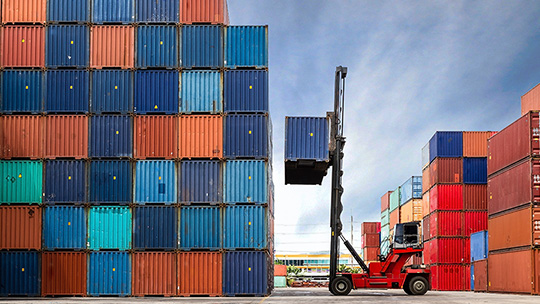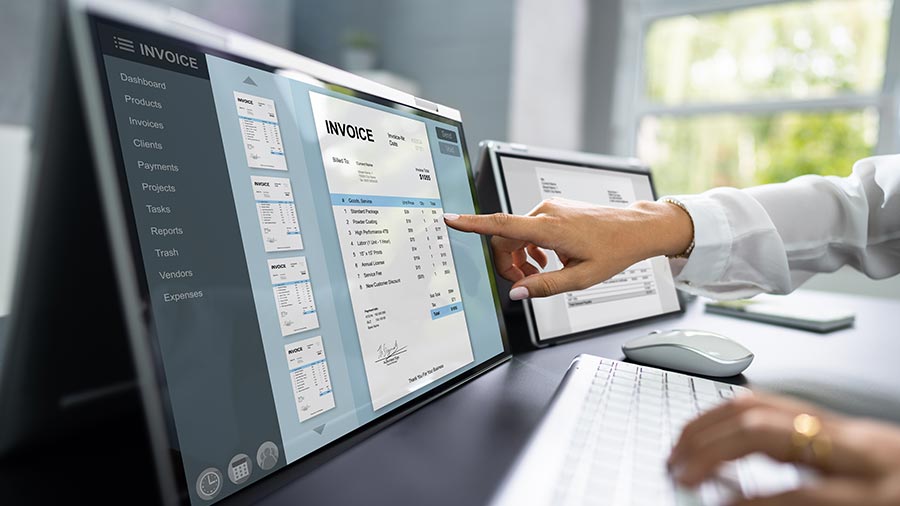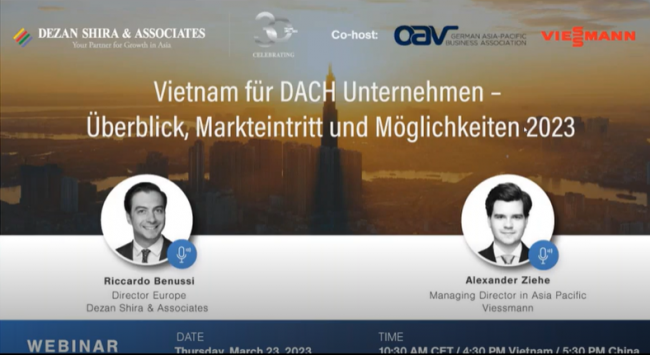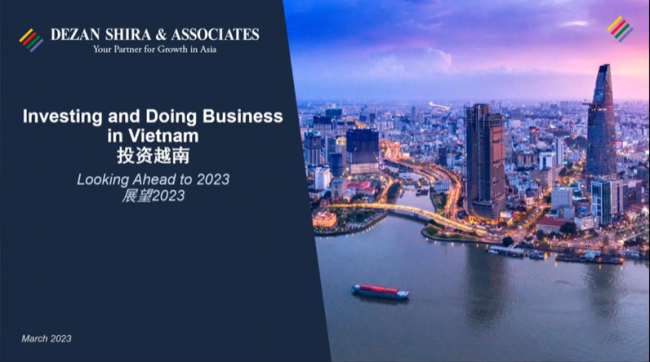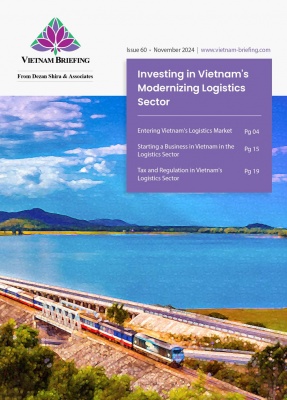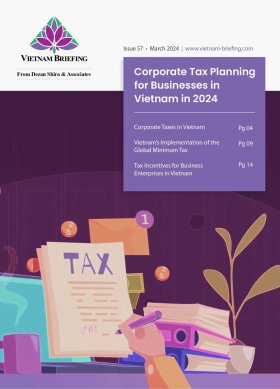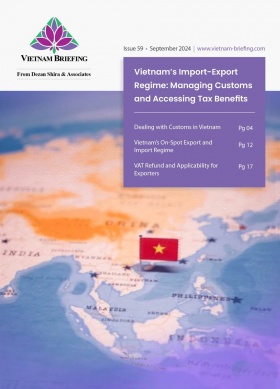Vietnam’s New VAT Law: Key Compliance Guidance
We examine Vietnam’s new Value Added Tax (VAT) Law, set to take effect on July 1, 2025, which introduces significant changes to the country’s VAT regime. Recent clarifications are outlined in Official Letter No. 1872/BTC-TCT, issued by the Ministry of Finance on February 17, 2025.
With the enactment of Law No. 48/2024/QH15 on Value Added Tax (VAT), the previous VAT Law No. 13/2008/QH12 (hereinafter referred to as the “2008 VAT Law”), along with its amendments under Laws No. 31/2013/QH13, No. 71/2014/QH13, and No. 106/2016/QH13, will no longer be in effect.
Businesses are advised to carefully review the notable changes in the compliance regime introduced by the new VAT law to ensure full adherence.
What is subject to the 0-percent rate under Vietnam’s new VAT Law?
Under Vietnam’s new VAT Law, goods and services sold to foreign entities and consumed outside of Vietnam are subject to a 0-percent VAT rate. To qualify for this rate, the goods must be physically delivered outside of Vietnam as part of export activities, in accordance with the law’s stipulations.
Implications for on-spot import and export activities
As outlined, the tax authority mandates that all exported goods must be consumed outside of Vietnam. Additionally, the draft customs regulation proposes eliminating the on-spot import and export scheme. These changes will have a significant impact on businesses relying on this model. Companies are advised to assess their specific circumstances and develop strategic plans to adapt their future business operations in Vietnam.
For more information, read our article: Vietnam’s On-Spot Export and Import Regime
Practical case studies for VAT application
Case 1: Exported goods delivered directly by a Vietnamese company (Seller) to another Vietnamese company under the foreign company’s (Buyer’s) instructions
The 0-percent VAT rate cannot be applied in cases where a Vietnamese company sells goods purchased by a foreign company directly to another Vietnamese company (“on-the-spot import and export”). This scenario does not meet the new VAT law’s requirement that goods and services must be consumed outside of Vietnam.
Furthermore, the customs authority is moving to abolish the on-the-spot import and export scheme, as reflected in the draft customs regulation currently under discussion. Once implemented, businesses relying on this model will need to adjust their operations accordingly.
Case 2: Exported goods delivered to a bonded warehouse, later retrieved by another Vietnamese company
When a Vietnamese company delivers goods purchased by a foreign company to a bonded warehouse, and another Vietnamese company subsequently retrieves the goods, the applicability of the 0-percent VAT rate is assessed as follows:
- According to Official Letter No. 1872/BTC-TCT issued by Vietnam’s Ministry of Finance on February 17, 2025, if the foreign company has a commercial presence in Vietnam, the transaction does not qualify for the 0-percent VAT rate.
- If the foreign company does not have a commercial presence in Vietnam, the applicability of the 0-percent VAT rate remains uncertain. Bonded warehouses are meant for goods that have completed customs import/export procedures and are awaiting either import into Vietnam or export overseas. When goods exported by a Vietnamese company are stored in a bonded warehouse and later retrieved by another Vietnamese company, this may fall outside the warehouse’s intended scope.
- Under the new VAT law, if goods purchased by a foreign company are ultimately consumed in Vietnam by the second Vietnamese company, the transaction may be disqualified from the 0-percent VAT rate.
Businesses should carefully evaluate these scenarios to ensure compliance, mitigate tax risks, and optimize VAT benefits in Vietnam.
For companies operating under this business model and currently applying the 0-percent VAT rate, it is advisable to conduct a thorough review and prepare for adjustments to their business activities by July 1, 2025.
Application in non-tariff areas
Goods and services sold or directly provided to organizations within non-tariff areas may qualify for the 0-percent VAT rate, provided the following conditions are met:
- The goods or services must be consumed within the non-tariff areas.
- They must directly support export production activities.
This requirement emphasizes the limited scope of activities eligible for the 0-percent VAT rate, reinforcing the focus on export-oriented operations.
Changes in VAT rates and invoice compliance regime
Reclassification of 5-percent and 10-percent VAT rates
Effective July 1, 2025, the VAT rate for foreign suppliers without permanent establishments (PE) in Vietnam, conducting e-commerce or digital-based business activities with organizations and individuals in Vietnam, will increase from 5 percent to 10 percent.
Additionally, there will be a reclassification of goods and services under the updated 5-percent and 10-percent VAT rate categories.
For more information, read our article: Vietnam’s 2024 VAT Law: Key Provisions and Changes to the VAT Regime.
Invoice guidance for the 10-percent VAT rate
Foreign contractors without a PE in Vietnam may register to use VAT invoices with the tax authority. However, specific guidelines have yet to be issued, and additional guidance is expected.
Once foreign companies comply with Vietnamese invoicing regulations and issue VAT invoices to Vietnamese customers, they may offset the 10-percent FCT-VAT paid to the tax authority against the 10-percent output VAT collected from customers.
From the customer’s perspective, obtaining VAT invoices from foreign companies is essential to claim the 10-percent input VAT. Without such invoices issued in accordance with Vietnamese regulations, customers will not be able to claim the input VAT if the invoice is issued under foreign companies’ laws.
Adjusted thresholds for VAT compliance regime
Non-cash payment threshold removed
Compared to the 2008 VAT Law, Vietnam’s new VAT Law has eliminated the threshold for non-cash payments. This means that all input VAT invoices must be paid through bank transfers, except in special cases as prescribed by the Government.
New threshold for annual revenues
Vietnam’s new VAT Law will raise the annual revenue threshold for business individuals and households exempt from VAT from VND 100 million (approx. US$3,900) to VND 200 million (approx. US$7,900). This provision will be effective from January 1, 2026.
VAT refund in different cases
Investment projects
The new law permits VAT refunds for business expansion investments that reach an accumulated input VAT of VND 300 million (approx. US$11,900) or more during the investment stage. Businesses have 1 year from the completion date of the investment project, phase, or unit to apply for the VAT refund. This amendment provides companies with additional time to prepare their VAT refund documentation.
Note on VAT declaration
According to the new law, businesses must include the refundable amount in their final VAT return during the investment phase on Form 02 for VAT declaration. Under the current VAT regulations, the refundable amount cannot be included in a revised VAT return if the VAT return for the next period under the production phase is submitted. Therefore, businesses must pay close attention during the transition period from Form 02 (investment phase) to Form 01 (revenue-generating phase under production).
Goods production and service provisions
Businesses that exclusively produce goods and offer services subject to a 5-percent VAT rate may be eligible for a VAT refund if the amount of unclaimed input VAT reaches VND 300 million (approximately US$11,900) or more after 12 consecutive months or four consecutive quarters.
For businesses that produce goods and provide services subject to multiple VAT rates, the refund is calculated based on the allocation ratio set by the government.
Removal of VAT refund-eligible cases
Vietnam’s new VAT Law eliminates VAT refunds for changes in ownership, enterprise type, merger, consolidation, separation, or de-merger, retaining only cases related to dissolution.
Additional conditions for VAT refund
Sellers must declare and pay output VAT on the invoices issued to the buyers. However, in practice, there is currently no system in place for buyers to verify whether the seller has declared and paid the output VAT. This verification is typically conducted by tax officers through internal tax channels.
Based on our recent experience working with tax authorities on VAT refund applications, we have found that this process can be very time-consuming and is beyond the Company’s control. The tax authority may reject the refund if they have not yet received confirmation from the relevant tax authorities that oversee the sellers.
This new challenge poses difficulties for firms in practice.
Additional documents are required
Companies can deduct input VAT for exported goods and services if they possess a packing slip, bill of lading, and cargo insurance certificate unless otherwise specified by the Government.
In relation to cargo insurance certificates, it applies to cases where the companies export goods under the Cost, Insurance, and Freight (CIF) Incoterm. Companies must maintain cargo insurance certificates and other necessary documents to claim the refund.
Conclusion
The new VAT Law in Vietnam, effective July 1, 2025, brings significant changes that businesses must navigate carefully. Key aspects include the conditions for applying the 0-percent VAT rate and adjustments to VAT rates for foreign suppliers.
Companies should proactively review their practices to ensure compliance with the new regulations and adapt their operations to mitigate risks and optimize tax benefits. Staying informed is crucial for successful adaptation to these changes.
This article was originally published January 9, 2025. It was last updated on February 20, 2025.
About Us
Vietnam Briefing is published by Asia Briefing, a subsidiary of Dezan Shira & Associates. We produce material for foreign investors throughout Asia, including ASEAN, China, and India. For editorial matters, contact us here and for a complimentary subscription to our products, please click here. For assistance with investments into Vietnam, please contact us at vietnam@dezshira.com or visit us at www.dezshira.com.
Dezan Shira & Associates assists foreign investors throughout Asia from offices across the world, including in Hanoi, Ho Chi Minh City, and Da Nang. We also maintain offices or have alliance partners assisting foreign investors in China, Hong Kong SAR, Dubai (UAE), Indonesia, Singapore, Philippines, Malaysia, Thailand, Bangladesh, Italy, Germany, the United States, and Australia.
- Previous Article Vietnam’s Legal Framework for Probationary Contracts: Implications for Businesses
- Next Article Vietnam’s Medical Devices Market Outlook: Projections and Insights
